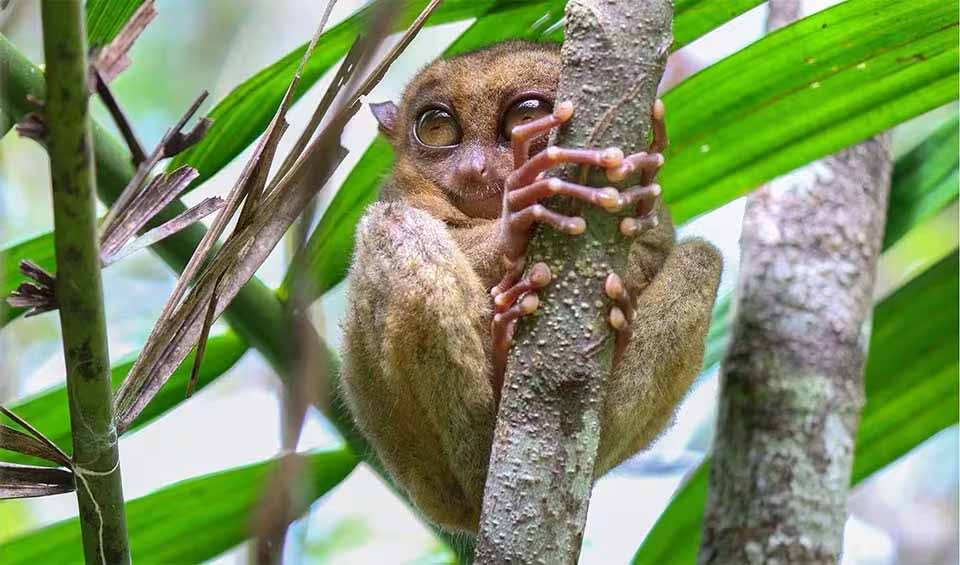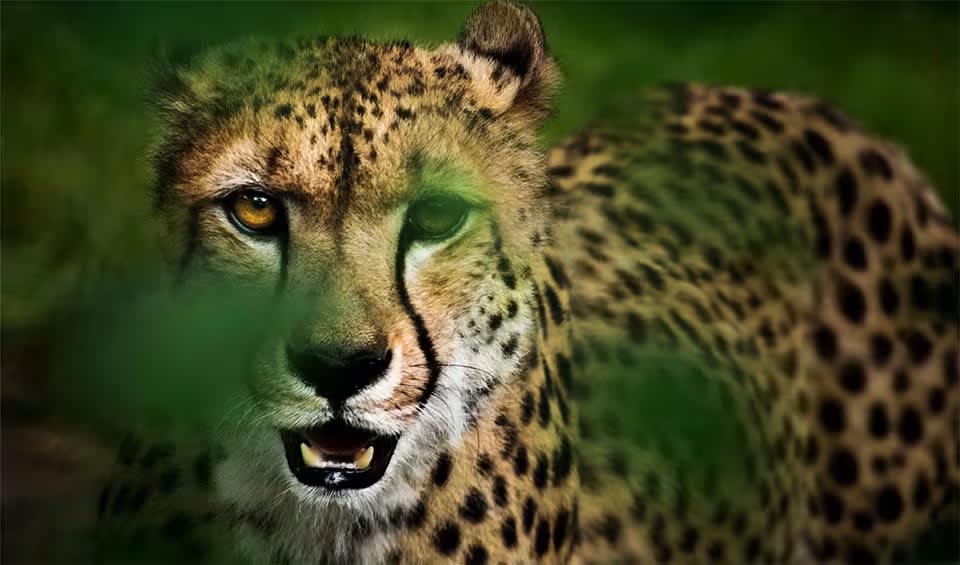These small, exclusively nocturnal creatures weigh around 140 grams (approximately 5 ounces) and are distinguished by their status as the only purely carnivorous primates on Earth. Their distribution is limited to several Southeast Asian islands, including parts of the Philippines, Indonesia, and Borneo, where they have adapted to a variety of forest habitats.
Tarsiers are renowned for their exceptional hunting abilities, which are enhanced by their distinctive physical adaptations. Despite the absence of a tapetum lucidum—a layer in the eyes of some animals that reflects light to improve night vision—tarsiers compensate with their remarkably large eyes relative to their body size. These eyes are among the largest, proportionally, of any mammal, granting them superior night vision to spot prey in the darkness. Additionally, tarsiers have an acute sense of hearing, which aids in detecting the movements of insects and small animals that comprise their diet.
Another notable adaptation is their incredibly long legs, powered by strong muscles and elongated tarsus bones, from which their name is derived. These adaptations allow tarsiers to leap with astonishing accuracy and agility from tree to tree in pursuit of prey, making them formidable nocturnal hunters.
Tarsiers exhibit a blend of features that link them to both the prosimian (pre-monkey) and simian (monkeys and apes) branches of primates, yet they possess unique characteristics that set them apart. Their evolutionary history is intriguing, albeit sparsely documented in the fossil record. The limited fossils that have been discovered, including those from the Middle Eocene, suggest a long and complex evolutionary lineage, highlighting the ancient origins of these captivating creatures.
Distribution
 Philippines
PhilippinesAnything we've missed?
Help us improve this page by suggesting edits. Glory never dies!
Suggest an editGet to know me
Terrestrial / Aquatic
Altricial / Precocial
Polygamous / Monogamous
Dimorphic (size) / Monomorphic
Active: Diurnal / Nocturnal
Social behavior: Solitary / Pack / Herd
Diet: Carnivore / Herbivore / Omnivore / Piscivorous / Insectivore
Migratory: Yes / No
Domesticated: Yes / No
Dangerous: Yes / No
Philippine tarsier on banknotes






